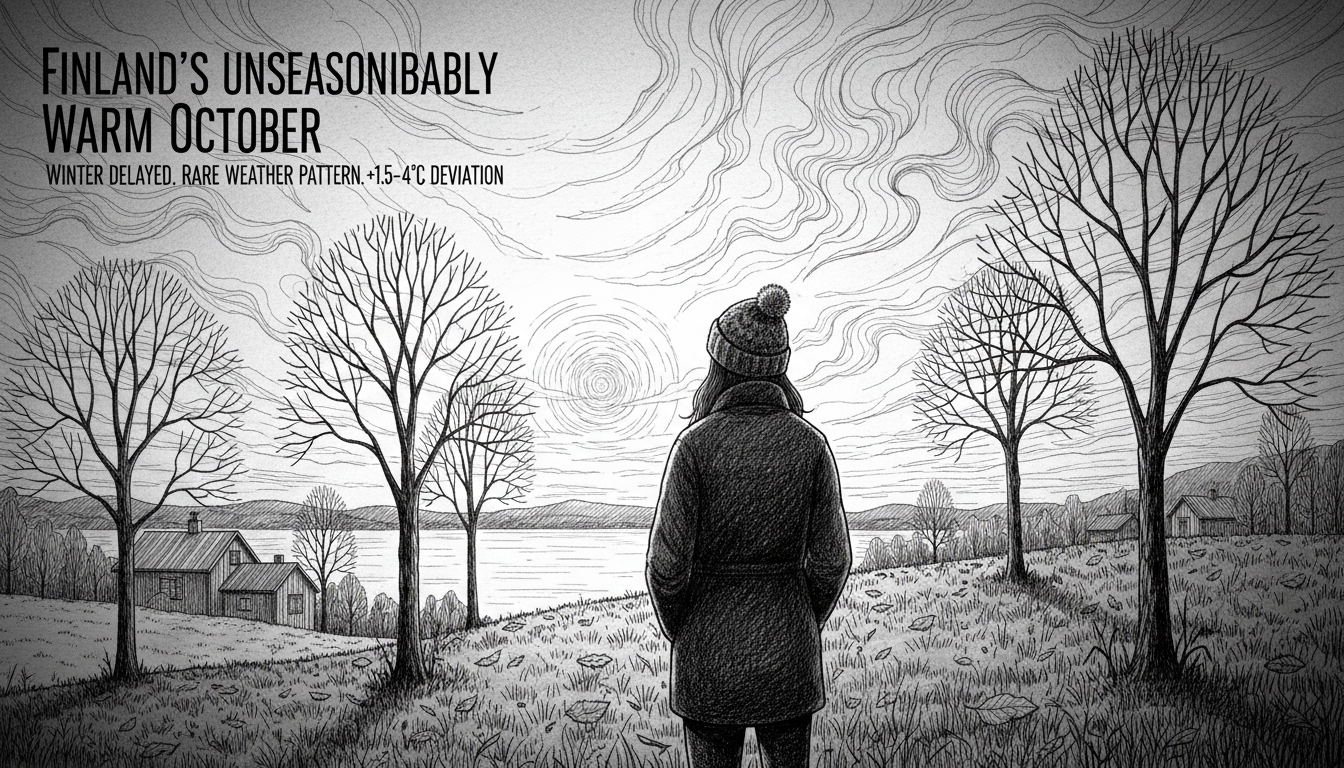October brought unusually warm temperatures across Finland, according to weather experts. The month measured significantly warmer than normal throughout the country. Southern and central regions recorded temperatures 1.5-2.5 degrees above average. Most parts of Lapland saw even greater deviations of 3-4 degrees above typical October readings.
Northern Finland experienced particularly rare warmth. This weather pattern occurs less frequently than once per decade statistically.
Temperature extremes didn't break historical records. The highest reading came from Kemiönsaari's Väinö observation station at +15.7°C on October 6. Finland's all-time October record remains +21.1°C from Oulu airport in 2018.
The month's lowest temperature measured -13.4°C at Enontekiö airport on October 21. The historical cold record stands at -31.8°C from Sodankylä in 1968.
Tornio's Kaakkuri received the most rainfall at 114.6 millimeters. This amount falls well short of the October record of 228.1 millimeters measured in Vihti during 2006.
Only two storm days occurred during October. The average over the past twenty years shows 3.3 storm days typically occur during this month. Nationwide, Finland experiences about 27 storm days annually with wind speeds exceeding 21 meters per second.
The mild weather delayed winter's arrival across most of Finland. Meteorological winter begins when daily average temperatures remain below freezing consistently. Experts determine winter's start retrospectively from temperature data.
Some northern stations like Kilpisjärvi's Saana observation station might have entered thermal winter around October 10. Many Northern Lapland stations continue showing temperatures fluctuating around the freezing point.
This persistent warmth represents a notable deviation from typical autumn patterns, raising questions about seasonal transitions in Nordic climates. The delayed winter onset could affect everything from energy consumption to winter sports preparation across the region.
